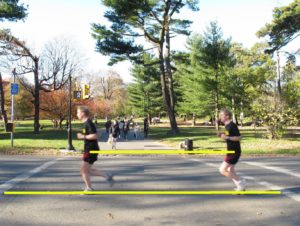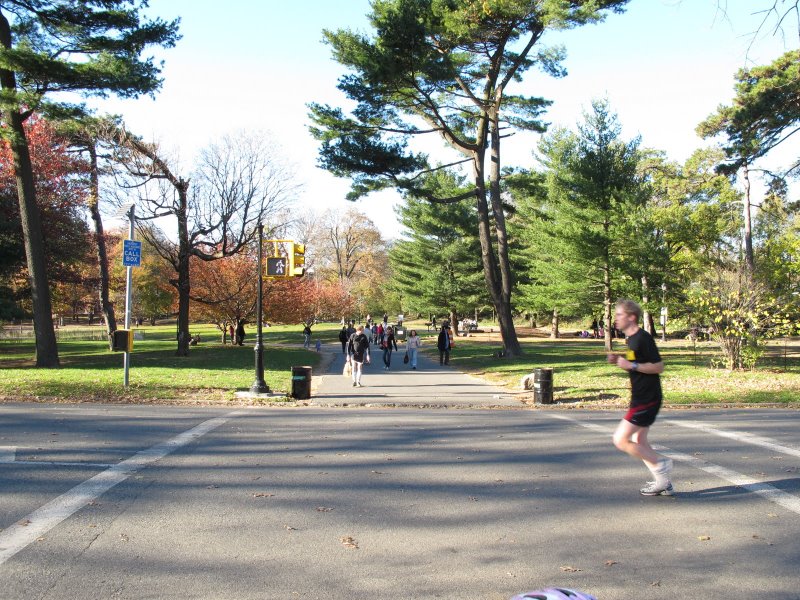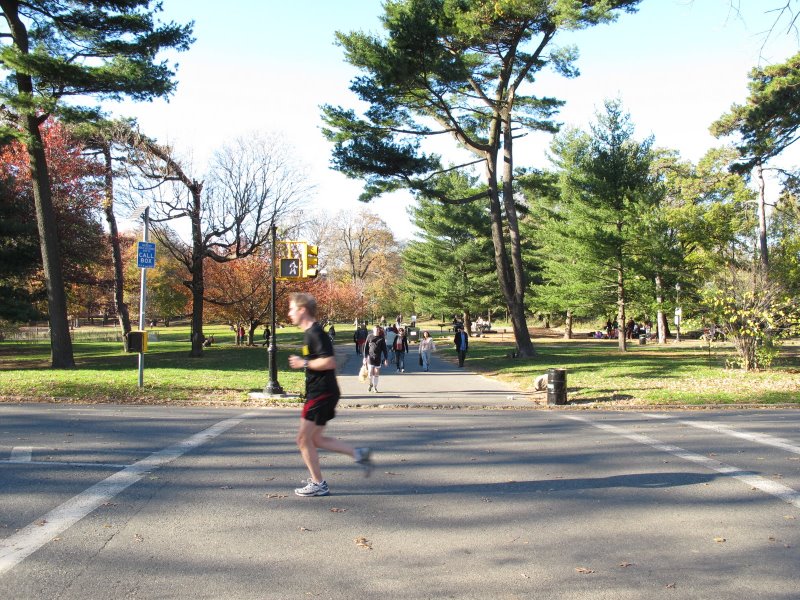 After using some photographs and some rough estimations to approximate the speed of a runner, I got to wondering “How important is the accuracy of the various estimations?”
After using some photographs and some rough estimations to approximate the speed of a runner, I got to wondering “How important is the accuracy of the various estimations?”
In the first solution, I estimated that the height of the runner was 5.75 feet. I then compared that to the runner’s height in pixel measure, created a pixel-to-feet conversion rate, and used this to calculate the distance the runner travelled during the 1.1 seconds between the two photographs. Once that distance was determined, the runner’s pace could be estimated at around 9.86 minutes per mile.
But what if I estimate of the runner’s height was off? And how off would it have to be to make a difference? Let’s say that the runner’ s height is actually 6 feet, and so my original estimate was off by .25 feet. How will this affect the final result?
The runner’s rate was originally calculated to be 590 pixels-per-second, and this is not affected by the estimate of the runner’s height. But if the runner’s real height was 6 feet, then the pixel-to-feet conversion rate is really 380-to-6, which means the runner’s rate translates to about 9.32 feet per second (intead of 8.93 feet per second, as originally calculated).
Following through with the calculations under this new height approximation, the runner runs one mile in 9.45 minutes. Therefore, if my height estimate was off by .25 feet, then my minutes-per-mile estimate is off by about .41 minutes. In both cases, this represents a difference of about 4%.
It makes sense that the percentage change is the same, as all the mathematical operations being done here are linear. The change in the input of 4% just keeps getting passed through every process without alteration, and eventually comes out as a 4% change in the output.
Related Posts





